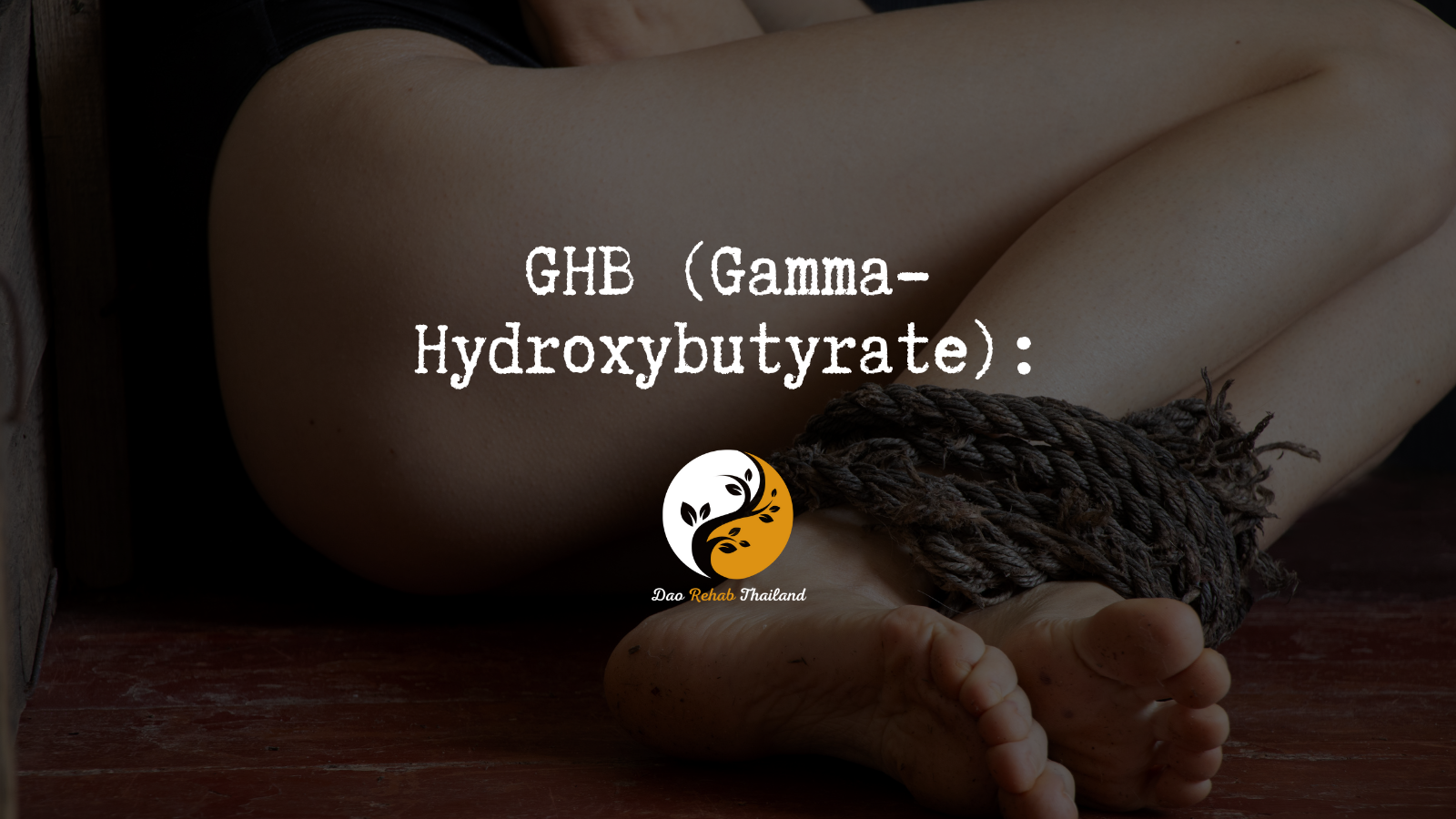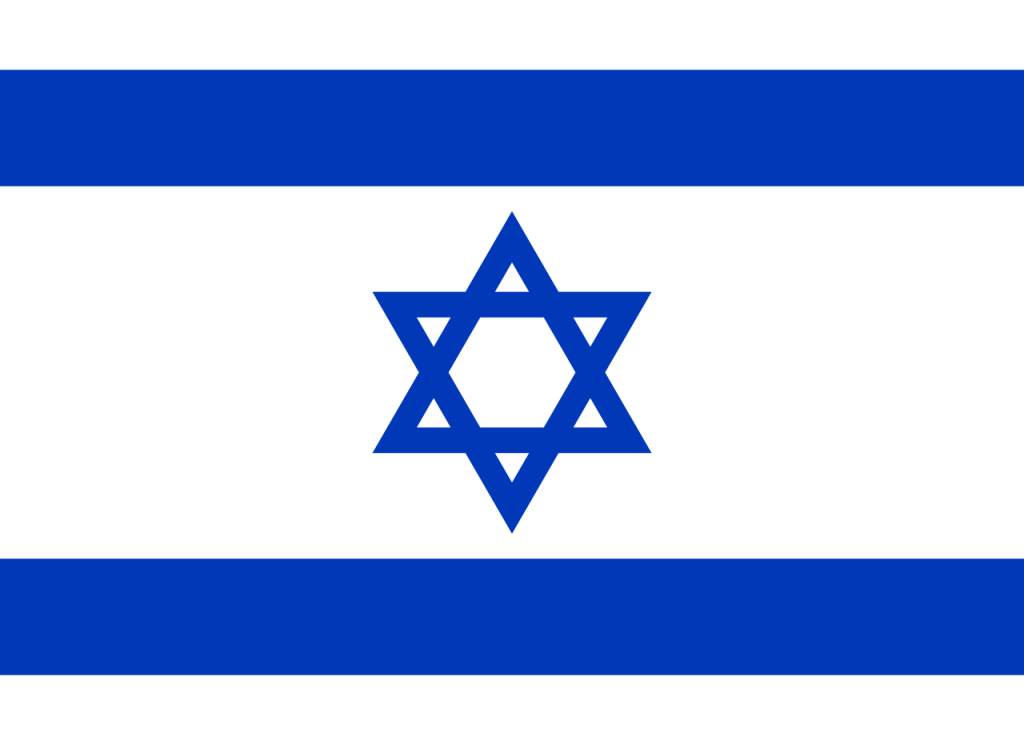
GHB (Gamma-Hydroxybutyrate)
GHB (Gamma-Hydroxybutyrate)
“Turning the impossible into possible”

"Detox from GHB (Gamma-Hydroxybutyrate): at a Luxury Holistic Center in Thailand and Israel"

Detox from GHB (Gamma-Hydroxybutyrate):
GHB is a central nervous system depressant that is both a naturally occurring neurotransmitter and a synthetic drug. It is known for its medical use in treating narcolepsy but is also infamous for its recreational use and association with cases of drug-facilitated sexual assault, earning it the nickname “date rape drug.”
"Holistic Center for Trauma, Addiction, and Mental Imbalance Treatment in Thailand"
“Come to the beginning of your journey to freedom from addiction to alcohol, drugs, and pills, and rediscover your life within the serene embrace of DaoTherapy Rehab in Thailand—where holistic healing meets empowering recovery.”
DaoTherapy Holistic Rehab
Key Elements of GHB Detox:
Medical Supervision: OxyContin detox must be conducted under medical supervision, as the body may experience withdrawal symptoms. These can include nausea, anxiety, muscle aches, and insomnia. A medical team will monitor and manage these symptoms to ensure the patient’s safety and comfort.
Holistic Therapies:
Holistic Therapies: Many detox programs incorporate holistic therapies such as mindfulness, yoga, and meditation to help individuals cope with stress and anxiety during the detox process. These therapies support the mind-body connection and contribute to overall recovery.
Tapering Process
Tapering Process: GHBdetox often involves a gradual tapering of the drug to reduce withdrawal severity. Doctors will slowly decrease the dosage over time to allow the body to adjust to lower levels of the substance.
Psychological Support:
Psychological Support: Like any addiction recovery process, detox from GHB includes psychological support. This can involve counseling, therapy, or support groups to address the mental and emotional aspects of addiction.
Post-Detox Treatment:
Post-Detox Treatment: After completing detox, continuing treatment is crucial to prevent relapse. This often includes participation in ongoing therapy, group support, and the development of new coping strategies to maintain sobriety.
General Background and History of GHB:
General Background and History of GHB (Gamma-Hydroxybutyrate):
1. Discovery and Early Use:
– Initial Discovery: GHB was first synthesized in 1960 by Dr. Henri Laborit, a French physician and researcher. He was investigating potential neurotransmitters and created GHB to study its effects on the central nervous system.
– Medical Applications: Early on, GHB was used as an anesthetic due to its sedative properties. However, because of its side effects, including seizures and unpredictable responses, its medical use in anesthesia was discontinued.
2. Natural Occurrence:
– Endogenous Production: GHB is a naturally occurring compound in the human body, functioning as a neurotransmitter and neuromodulator. It is involved in processes such as sleep regulation, temperature control, and mood stabilization.
3. Medical Use in Narcolepsy:
– Xyrem Approval: In the 2000s, GHB was approved for medical use under the brand name Xyrem. It is prescribed to treat cataplexy and excessive daytime sleepiness in people with narcolepsy. In this context, GHB helps regulate sleep cycles and improve the quality of sleep.
4. Recreational Use and Popularity:
– Club Drug Emergence: In the 1980s and 1990s, GHB gained popularity as a recreational drug, particularly in the club and party scenes. Users sought it for its euphoric and relaxing effects. It became known for its ability to enhance social interactions and provide a sense of well-being.
– Bodybuilding: GHB was also used by bodybuilders due to the belief that it could stimulate growth hormone release and promote muscle growth. However, these claims were not backed by substantial scientific evidence.
5. Association with Sexual Assault:
– Date Rape Drug” Reputation: GHB is colorless, odorless, and easily dissolvable in liquids, making it a tool for drug-facilitated crimes, including sexual assault. This reputation contributed to increased awareness and regulatory control over the substance.
6. Legal Regulation:
– Banning and Scheduling: Due to its potential for abuse and association with criminal activity, GHB was classified as a Schedule I controlled substance in many countries, including the United States, when used without medical supervision. This classification indicates a high potential for abuse and no accepted medical use outside specific cases.
– Medical Exception: When prescribed as Xyrem for treating narcolepsy, GHB is regulated as a Schedule III controlled substance in the United States, allowing for its legitimate medical use under strict conditions.
7. Mechanism of Action:
– Interaction with GABA Receptors: GHB primarily acts on the GABA (gamma-aminobutyric acid) receptors in the brain, leading to its sedative and euphoric effects. It slows brain activity and produces a calming effect on the nervous system.
– Effects on Dopamine: At low doses, GHB inhibits dopamine release, while at higher doses, it can cause a rebound effect, leading to increased dopamine activity once the initial effect wears off.
8. Challenges and Controversies:
– Overdose Risks: The margin between a recreational dose and an overdose is narrow, making GHB particularly risky. Overdose symptoms can include seizures, respiratory depression, and loss of consciousness.
– Dependence and Withdrawal: Chronic use can lead to physical dependence and severe withdrawal symptoms, including anxiety, insomnia, tremors, and in extreme cases, life-threatening delirium.
GHB has a complex history, from its initial discovery as an anesthetic agent to its current medical use for treating narcolepsy. It gained a negative reputation as a “date rape drug” due to its misuse in drug-facilitated crimes. While it has legitimate medical benefits, particularly for sleep disorders, its potential for abuse and narrow safety margin make it a controlled substance in most countries. Proper medical supervision is essential for safe use, and awareness of its risks is crucial for preventing misuse.

contact us
Contact us with your questions
We would love to speak with you! Feel free to reach out with any questions.

get in touch
Schedule a free consultation
Schedule a free consultation with our team and let’s make things happen!
What You Need to Know About GHB Withdrawal:
What You Need to Know About GHB Withdrawal:
GHB (Gamma-Hydroxybutyrate) withdrawal can be severe and potentially life-threatening due to the drug’s strong sedative properties and the body’s rapid development of dependence. Understanding the withdrawal process, its symptoms, and appropriate management is essential for those struggling with GHB addiction.
1. Why GHB Withdrawal is Challenging:
– Physical Dependence: Regular use of GHB leads to physical dependence, where the body becomes accustomed to the presence of the drug and needs it to maintain normal functioning.
– Narrow Safety Margin: The difference between a recreational dose and an overdose is narrow, making the drug particularly risky and withdrawal intense.
– CNS Impact: GHB acts on the central nervous system (CNS) by affecting GABA receptors, which are responsible for calming brain activity. When GHB use stops, the brain can become hyperactive, leading to severe withdrawal symptoms.
2. Common Withdrawal Symptoms:
– Mild to Moderate Symptoms:
– Anxiety and Agitation: Increased restlessness and irritability are common.
– Tremors and Shaking: Uncontrollable shaking, especially in the hands.
– Sweating: Excessive perspiration can occur as the body detoxifies.
– Nausea and Vomiting: Stomach discomfort and vomiting are frequent.
– Severe Symptoms:
– Hallucinations: Both visual and auditory hallucinations can occur, particularly in severe cases.
– Delirium: Confusion, disorientation, and a disturbed state of mind can result.
– Seizures: In extreme cases, seizures may occur, posing significant health risks.
– Tachycardia and High Blood Pressure: Rapid heart rate and elevated blood pressure are possible.
– Insomnia: Difficulty sleeping, often accompanied by intense nightmares.
3. Timeline of Withdrawal:
– Early Stage (Within 6-12 hours): Initial symptoms, such as anxiety, tremors, and sweating, often begin shortly after the last dose.
– Acute Stage (24-72 hours): Symptoms peak, and severe cases may experience hallucinations, seizures, and delirium.
– Prolonged Stage (Up to 1-2 weeks): Psychological symptoms like anxiety, depression, and insomnia may continue for an extended period.
4. Risk of Severe Withdrawal:
– Medical Emergencies: GHB withdrawal can be life-threatening and may require immediate medical attention, particularly if severe symptoms like seizures or delirium tremens (DTs) occur.
– Relapse Risk: Due to the intensity of withdrawal symptoms, relapse is common without proper support and medical intervention.
5. Treatment and Management:
– Medical Supervision: Detoxification should be done under the supervision of healthcare professionals to manage severe symptoms and prevent complications.
– Medications: In some cases, benzodiazepines or other sedative medications may be prescribed to help manage symptoms and reduce the risk of seizures.
– Supportive Care: Hydration, nutrition, and rest are essential during withdrawal. Support from medical staff, friends, and family can make a significant difference in the recovery process.
– Psychological Support: Counseling and therapy can address the emotional aspects of withdrawal and reduce the risk of relapse.
6. Post-Withdrawal Care:
– Rehabilitation Programs: Enrolling in a structured rehabilitation program can provide long-term support and therapy to maintain sobriety and address underlying issues related to addiction.
– Relapse Prevention: Building a strong support system, developing coping mechanisms, and participating in support groups can help maintain recovery after withdrawal.
GHB withdrawal is a serious condition that can range from mild anxiety and tremors to severe symptoms like seizures and hallucinations. Because of the risk of severe complications, medical supervision during withdrawal is highly recommended. Comprehensive treatment that includes medical support, psychological counseling, and rehabilitation programs can greatly improve the chances of successful recovery and long-term sobriety.
Characteristics of GHB Addiction:
Characteristics of GHB Addiction:
GHB (Gamma-Hydroxybutyrate) addiction is marked by various physical, psychological, and behavioral signs. Due to its strong sedative and euphoric effects, dependence can develop quickly with repeated use. Here are the main characteristics of GHB addiction:
1. Rapid Development of Dependence:
– Frequent Use: Individuals may use GHB multiple times a day due to its short half-life and the need to maintain its effects.
– Tolerance: Over time, users develop tolerance, requiring larger or more frequent doses to achieve the same euphoric and sedative effects.
2. Physical Dependence:
– Withdrawal Symptoms: When users stop taking GHB, they often experience withdrawal symptoms, which can range from mild anxiety to severe reactions such as seizures or delirium.
– Physical Health Decline: Prolonged use can lead to overall deterioration in physical health, including dehydration, frequent nausea, and disruptions in sleep patterns.
3. Cravings and Compulsive Behavior:
– Intense Cravings: Users experience strong, often uncontrollable, cravings for GHB, which can lead to compulsive drug-seeking behavior.
– Loss of Control: Individuals may find it difficult to control the amount and frequency of GHB use, even when they wish to stop.
4. Behavioral Changes:
– Neglect of Responsibilities: Addiction often results in the neglect of personal, professional, or academic obligations as obtaining and using the drug becomes a priority.
– Risky Behavior: Users may engage in dangerous behavior, such as combining GHB with other substances, which increases the risk of overdose and severe side effects.
5. Social and Interpersonal Impact:
– Isolation: Individuals struggling with GHB addiction may withdraw from social interactions and distance themselves from family and friends.
– Relationship Strain: The addiction can lead to conflicts with loved ones, often due to secrecy, erratic behavior, or neglect of relationships.
6. Psychological Dependence:
– Mood Swings: GHB addiction can lead to extreme mood fluctuations, including bouts of euphoria followed by depression and irritability.
– Anxiety and Paranoia: Long-term use can cause heightened anxiety, paranoia, and, in some cases, psychotic symptoms.
– Cognitive Impairment: Prolonged use of GHB may impair concentration, memory, and decision-making abilities.
7. Physical Signs of Use:
– Drowsiness: Regular GHB users often appear drowsy or lethargic, especially if they are using high doses or mixing GHB with other substances.
– Impaired Coordination: Difficulty with motor functions, slurred speech, and impaired balance are common signs of GHB intoxication.
– Weight Changes: Some individuals may experience noticeable changes in weight due to disruptions in appetite and sleep patterns.
8. Increased Risk of Overdose:
– Narrow Therapeutic Window: The difference between a recreational dose and an overdose is small, making GHB particularly risky for users.
– Overdose Symptoms: Include severe drowsiness, vomiting, muscle spasms, slowed heart rate, respiratory depression, and unconsciousness. Severe cases can lead to coma or death.
GHB addiction is characterized by a rapid development of physical and psychological dependence, intense cravings, behavioral changes, and significant social and health impacts. Users may display signs of impaired coordination, mood swings, and drowsiness. Due to the high risk of overdose and severe withdrawal symptoms, medical supervision and comprehensive treatment are essential for individuals seeking to overcome GHB addiction.
More Severe Side Effects of GHB (Gamma-Hydroxybutyrate):
More Severe Side Effects of GHB (Gamma-Hydroxybutyrate):
While GHB is known for its sedative and euphoric effects, it poses significant risks when misused or taken in excessive amounts. The side effects can range from moderate to severe, and chronic use or high doses can lead to serious health complications. Here are the more severe side effects of GHB:
1. Respiratory Depression:
– Decreased Breathing Rate: GHB can slow down breathing significantly, leading to respiratory depression. In severe cases, this can result in hypoxia (reduced oxygen supply to the brain), leading to unconsciousness or death.
– Risk with Combinations: The risk of respiratory depression increases dramatically when GHB is taken with other central nervous system depressants, such as alcohol or benzodiazepines.
2. Loss of Consciousness and Coma:
– Sudden Unconsciousness: High doses of GHB can cause users to lose consciousness rapidly, which is why it has been associated with incidents of overdose and drug-facilitated crimes.
– Coma: Prolonged use of high doses can lead to a state of coma, requiring immediate medical intervention to prevent long-term damage or death.
3. Seizures:
– Severe Neurological Reactions: Chronic or excessive use can trigger seizures, which may occur during withdrawal or after taking particularly large doses.
– Withdrawal-Induced Seizures: Seizures are also a significant risk for individuals undergoing GHB withdrawal, emphasizing the need for medical supervision.
4. Delirium and Hallucinations:
– Psychotic Symptoms: High doses or chronic use can lead to severe confusion, disorientation, and even hallucinations. Users may experience visual or auditory distortions, contributing to paranoia and erratic behavior.
– Delirium Tremens (DTs): This is a life-threatening condition that may occur during severe withdrawal, characterized by agitation, rapid heartbeat, and extreme mental confusion.
5. Cardiovascular Issues:
– Irregular Heart Rate: GHB can affect the heart’s rhythm, potentially leading to arrhythmias or palpitations.
– Blood Pressure Changes: The drug can cause fluctuations in blood pressure, increasing the risk of cardiovascular events, particularly in those with preexisting conditions.
6. Severe Anxiety and Panic Attacks:
– Intense Emotional Distress: Users may experience heightened anxiety or panic attacks, especially during the withdrawal phase or when the drug’s effects wear off.
– Agitation and Restlessness: Users might become extremely restless or aggressive, posing a danger to themselves and others.
7. Cognitive and Memory Impairment:
– Short-Term Memory Loss: Regular use can impair short-term memory, making it difficult for individuals to recall recent events.
– Long-Term Cognitive Decline: Chronic use of GHB can contribute to long-term cognitive deficits, affecting concentration, decision-making, and general brain function.
8. Vomiting and Aspiration Risk:
– Nausea and Vomiting: High doses often induce severe nausea and vomiting, which poses a risk of aspiration (inhaling vomit) and subsequent respiratory complications, especially if the individual is unconscious.
High Potential for Overdose:
– Narrow Therapeutic Window: GHB has a very narrow safety margin between a recreational dose and a toxic dose. This narrow window increases the potential for accidental overdose.
– Overdose Symptoms: Overdose signs include extreme drowsiness, unresponsiveness, slow or irregular breathing, muscle spasms, seizures, and unconsciousness. Severe cases can result in coma or death.
Management and Prevention:
– Medical Supervision: It is crucial to use GHB under strict medical supervision if prescribed for legitimate medical purposes, like treating narcolepsy.
– Emergency Response: Immediate medical attention is necessary if an overdose or severe reaction occurs to prevent long-term damage or fatality.
– Detox and Treatment Programs: For those dealing with GHB dependence, professional detox and rehabilitation programs are essential to safely manage withdrawal and prevent relapse.
GHB poses severe health risks, especially at high doses or with chronic use. These risks include respiratory depression, seizures, unconsciousness, coma, cardiovascular issues, severe anxiety, and long-term cognitive impairment. Due to the high potential for overdose and life-threatening complications, medical attention and careful management are critical for those using or withdrawing from GHB.
Psychological Support:
Psychological Support: Like any addiction recovery process, detox from Subutex includes psychological support. This can involve counseling, therapy, or support groups to address the mental and emotional aspects of addiction.
Information about GHB and Its Mechanism of Action:
Information About GHB (Gamma-Hydroxybutyrate) and Its Mechanism of Action:
GHB (Gamma-Hydroxybutyrate) is a central nervous system depressant known for its sedative and euphoric properties. While it has medical uses, particularly in treating narcolepsy, it is also notorious for its recreational misuse and association with drug-facilitated crimes.
1. What is GHB?:
– Natural Occurrence: GHB is naturally produced in small amounts within the human body, where it acts as a neurotransmitter and neuromodulator.
– Medical Use: Prescribed under the brand name Xyrem, GHB is used to treat narcolepsy by improving sleep quality and reducing cataplexy (sudden muscle weakness).
– Recreational Use: It is commonly misused for its euphoric, sedative, and disinhibitory effects. GHB is often referred to as a “club drug” and has a history of being used in party scenes.
2. Chemical Structure and Properties:
– Chemical Nature: GHB is a derivative of gamma-aminobutyric acid (GABA), a primary inhibitory neurotransmitter in the brain.
– Physical Form: It typically comes as a colorless, odorless liquid that can easily be mixed into beverages, making it difficult to detect.
3. Mechanism of Action:
– Interaction with Receptors: GHB primarily acts on two types of receptors in the brain:
– GHB Receptors: These specific receptors are thought to mediate some of the unique psychoactive effects of GHB.
– GABA_B Receptors: GHB has a strong affinity for GABA_B receptors, contributing to its sedative and depressant effects by enhancing GABAergic activity. This leads to reduced neural activity and a calming effect on the central nervous system.
– Dopamine Release: GHB has a biphasic effect on dopamine:
– Inhibition at Low Doses: Initially, GHB inhibits dopamine release, creating a calming and sedative state.
– Dopamine Rebound: At higher doses or after the drug wears off, there is a rebound increase in dopamine levels, contributing to stimulant-like effects or potential agitation.
4. Effects on the Body and Brain:
– Sedative and Anxiolytic Effects: GHB promotes relaxation, drowsiness, and reduced anxiety.
– Euphoric Sensation: At certain doses, users may experience euphoria and a sense of well-being, which is why it is popular in recreational settings.
– Amnesic Effects: GHB can cause memory lapses and impair the ability to recall events, especially at higher doses.
5. Risks and Side Effects:
– Overdose Potential: The difference between a recreational dose and an overdose is narrow. Symptoms of overdose include severe drowsiness, confusion, vomiting, seizures, respiratory depression, and unconsciousness.
– Dependence and Withdrawal: Prolonged use can lead to physical and psychological dependence. Withdrawal symptoms can be severe, including anxiety, tremors, sweating, hallucinations, and seizures.
– Interaction with Alcohol: GHB’s effects are significantly amplified when combined with alcohol or other depressants, increasing the risk of severe respiratory depression and death.
6. Detection and Regulation:
– Detection Challenges: Due to its liquid form and rapid metabolism, GHB can be difficult to detect in standard drug screenings unless specific tests are conducted soon after ingestion.
– Legal Status: GHB is classified as a Schedule I controlled substance in many countries for non-prescription use, indicating a high potential for abuse. However, it is classified as Schedule III in the U.S. when prescribed as Xyrem for narcolepsy treatment.
GHB is a potent central nervous system depressant that acts primarily on GABA_B receptors and specific GHB receptors to produce sedative, euphoric, and anxiolytic effects. While it has legitimate medical uses, its misuse can lead to severe side effects, including overdose, dependence, and withdrawal. Understanding its mechanism of action and the associated risks is essential for safe use and effective treatment of GHB addiction or dependence.
Physical Withdrawal Symptoms of GHB (Gamma-Hydroxybutyrate):
Physical Withdrawal Symptoms of GHB (Gamma-Hydroxybutyrate):
Withdrawal from GHB can be severe and potentially life-threatening due to the drug’s impact on the central nervous system. The physical withdrawal symptoms often resemble those seen with withdrawal from other sedatives but can be more intense and prolonged. Here are the main physical withdrawal symptoms associated with GHB:
1. Tremors and Shaking:
– Body Tremors: Uncontrollable shaking, particularly in the hands, is a common symptom as the body adjusts to the absence of the drug.
2. Sweating:
– Excessive Sweating: Profuse sweating can occur as the body tries to detoxify and regulate its internal balance.
3. Nausea and Vomiting:
– Gastrointestinal Distress: Many users experience nausea, stomach cramps, and vomiting during the withdrawal period.
4. Rapid Heart Rate and High Blood Pressure:
– **Cardiovascular Symptoms**: Withdrawal can lead to an increased heart rate (tachycardia) and elevated blood pressure, which may pose risks for those with preexisting heart conditions.
5. Muscle Cramps and Pain:
– **Physical Discomfort**: Muscle cramps, body aches, and joint pain can develop as the body responds to the absence of GHB.
6. Insomnia:
– Sleep Disruption: Difficulty sleeping or experiencing intermittent and disturbed sleep is common during GHB withdrawal.
7. Seizures:
– Risk of Seizures: One of the most severe physical symptoms of GHB withdrawal is the risk of seizures, which can be life-threatening and require immediate medical attention.
8. Fatigue:
– Exhaustion: Persistent fatigue and low energy levels are common as the body deals with the stress of withdrawal.
9. Dehydration:
– Fluid Loss: Vomiting and excessive sweating can lead to dehydration, which needs to be managed to avoid further complications.
10. Headaches:
– Pain and Pressure: Withdrawal can cause persistent headaches due to changes in blood pressure and stress.
Duration of Physical Withdrawal Symptoms:
– Initial Phase (6-12 Hours): Symptoms can start as soon as 6 to 12 hours after the last dose, with tremors, sweating, and anxiety.
– Acute Phase (24-72 Hours): The most intense symptoms, such as seizures, nausea, and tachycardia, typically peak during this period.
– Prolonged Symptoms (Up to 1-2 Weeks): Some physical symptoms, like insomnia, muscle pain, and fatigue, may persist for several weeks as the body continues to recover.
Managing Physical Withdrawal:
– Medical Supervision: GHB withdrawal should be managed under medical supervision due to the risk of severe complications like seizures.
– Hydration and Nutrition: Ensuring proper hydration and nutrition can help support the body’s recovery process.
– Medication Assistance: In some cases, medications such as benzodiazepines may be used to help manage severe symptoms and reduce the risk of seizures.
– Rest and Comfort Measures: Supportive care, including a calm environment and physical comfort measures, can help ease withdrawal symptoms.
Physical withdrawal from GHB is marked by a range of symptoms that can include tremors, sweating, nausea, muscle pain, and severe complications like seizures. The process can be life-threatening, making medical supervision essential for anyone going through withdrawal. Proper care and management can help mitigate the risks and support a safer and more comfortable recovery.
Psychological Support:
Psychological Support: Like any addiction recovery process, detox from Subutex includes psychological support. This can involve counseling, therapy, or support groups to address the mental and emotional aspects of addiction.








